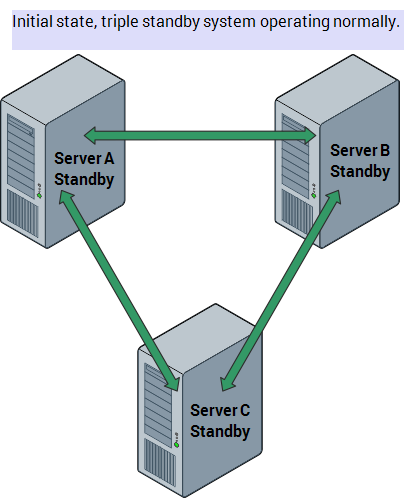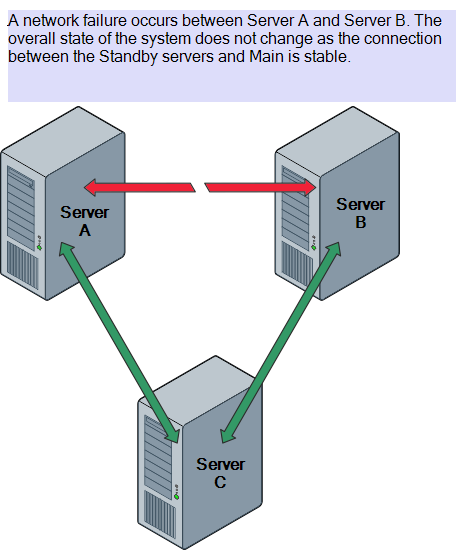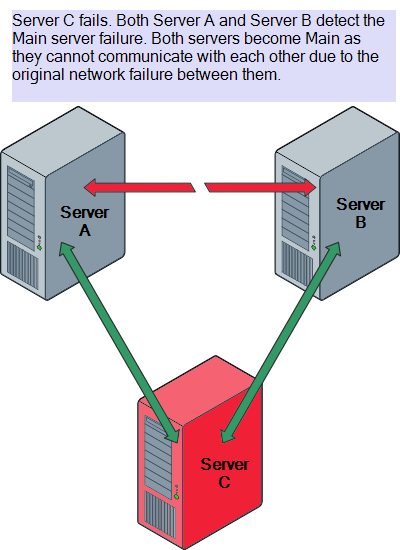Main-Main and Main-Main-Main Situations
Multi-server systems are designed to provide backup servers in the event of a hardware, software, or network failure. When the servers are online and can connect to each other, one server will act as the Main server and the other server(s) will act as the Standby server. However, if a network fault occurs, the servers may not be able to communicate with each other and this can result in a Main-Main or a Main-Main-Main situation.
- A Main-Main situation is when two servers in the same architecture run as Main servers at the same time (see Define what Action Should be Taken when a Server Becomes Isolated).
- A Main-Main-Main situation is when the three servers in a Triple Standby Architecture run as Main servers at the same time.
During a Main-Main or Main-Main-Main situation, each server acts independently. When the connections between the servers are restored, the servers use ClearSCADA's arbitration process to determine which server continues as Main and which server(s) switch to Standby.
The servers will use the following information (in order) to determine which server continues as Main (with the other server or servers switching to Standby):
- Arbitration Priority setting in the servers’ configuration.
The server with the highest Arbitration Priority setting continues as the Main server. Step 2 (below) is only considered if the highest Arbitration Priority setting is the same on more than one server. For example, if there are three servers and Server1 has an Arbitration Priority of 1, and Server2 and Server3 both have an Arbitration Priority of 2, Server1 switches to Standby and Step 2 is used as the next arbitration criteria between Server2 and Server3.
- Amount of time each server has been running as Main.
NOTE: The Action after Isolated Main setting can change the arbitration policy if used.
The server that has been running as Main for the longest amount of time continues as the Main server. If the servers have been running as Main for the same amount of time, Step 3 (below) is used as the next arbitration criteria.
- Amount of time each server has been running (as either / both Main or Standby).
The server that has been running the longest amount of time continues as the Main server. If the servers have been running for the same amount of time, Step 4 (below) is used as the next arbitration criteria.
- The ASCII value of the servers’ node names.
The server with the highest ASCII value for its name continues as the Main server.
When the servers have arbitrated, the servers will attempt to synchronize. If the Duty Mode feature is disabled, the server that continues as Main will overwrite the data on the Standby server(s) so that each of the servers has the same data as the Main. If Duty Mode is enabled, the Standby server(s) will update the Main server before the Main server overwrites the Standby server(s). For more information, see Enable or Disable Duty Mode.
Users that perform configuration tasks on clients need to be aware of the implications of performing configuration tasks during a Main-Main or Main-Main-Main situation. Configuration changes performed on a server that loses arbitration are discarded. Configuration changes should not be performed until a Main-Main or Main-Main-Main situation has been resolved.


